
Greetings Friends,
This newsletter includes; Gouldian Walks, Nature Positive, Lee Point development update, Darwin woodland, plants and wildlife.
1.0 Gouldian Walks at Lee Point
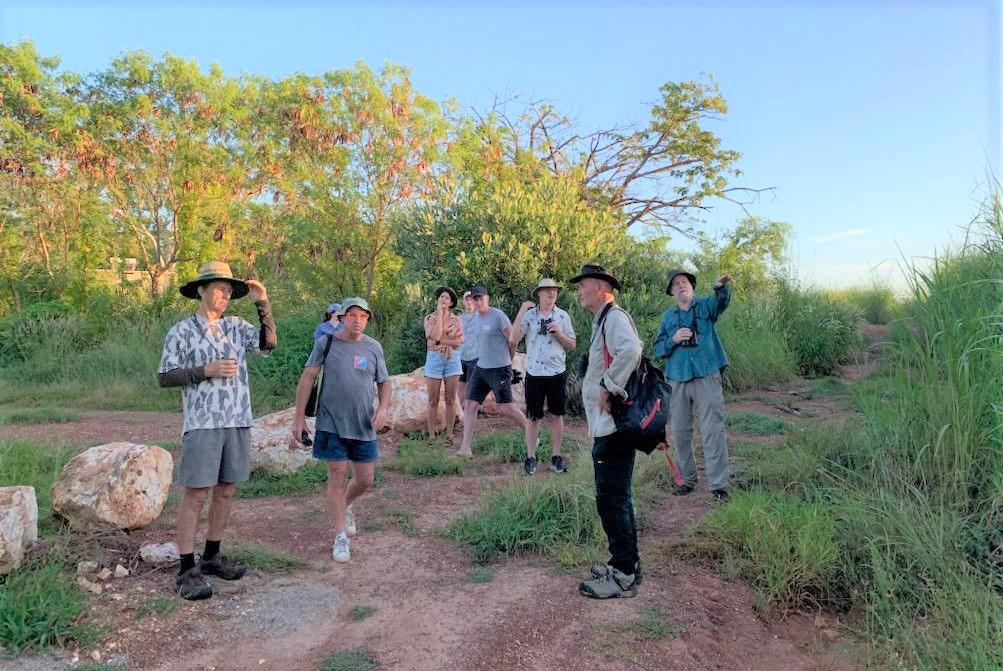
Lots of birds seen (no gouldians yet) on the Gouldian Walks, 22-23 April. Everyone enjoyed the self-guided walks around Lee Point dam.
There will be more Gouldian Walks at Lee Point, 6-7 May – details here
Join us at the Seabreeze Festival for Colour My World
2.0 Nature Positive – time for a change
Our environment minister, Tanya Plibersek announced at the end of 2022 that “Australia’s environment laws are broken” and launched the government’s “Nature Positive Plan”. The term “Nature Positive” is used to describe “… circumstances where nature – species and ecosystems – is being repaired and is regenerating rather than being in decline”.
The details are in the plan; however, it has three fundamental principles (paraphrased here):
-
adopting regulation that leads to nature positive decisions, better partnerships with First Nations and better targeted conservation planning.
-
faster decision-making and clear priorities to provide certainty to project proponents
-
restoring trust in environmental decision-making through an independent EPA.
FLP believe that not having the DHA development at Lee Point respects First Nation (Larrakia) wishes and allows for better targeted conservation planning in the Darwin area.
United Nations – IPCC 6TH Synthesis report: Climate Change 2023 (released March 2023) said the world needed to act now if it was to limit global warming to 1.5 degrees Celsius. The panel wants a 50% reduction in greenhouse gas emissions by 2030 (equates to ~7% reduction per year starting now). Deforestation and reforestation are high on the list of IPCC options to reduce emissions after renewables, refer IPCC Chart.
Today, protecting old growth forests/woodland is more important than ever. These areas store a lot of carbon, have a high biodiversity and contain old trees needed by wildlife.
Darwin’s disappearing large woodland trees
Large woodland trees (LWT), typically Darwin stringybarks, woollybutts and bloodwoods over 35cm in diameter, are important because they contain tree hollows. Without LWT many of our native species will not breed.

The above Sugar Glider and Red-tailed Black Cockatoo rely on LWT (tree hollows).
Having quality woodland in Darwin makes life better for people and wildlife. Darwin’s current regional land use plan means that the majority of LWT in the Darwin area (outside of Charles Darwin National Park) will be lost through clearing. Typically housing and LWT occur 14m above mean sea level (14m contour) – blue line below;
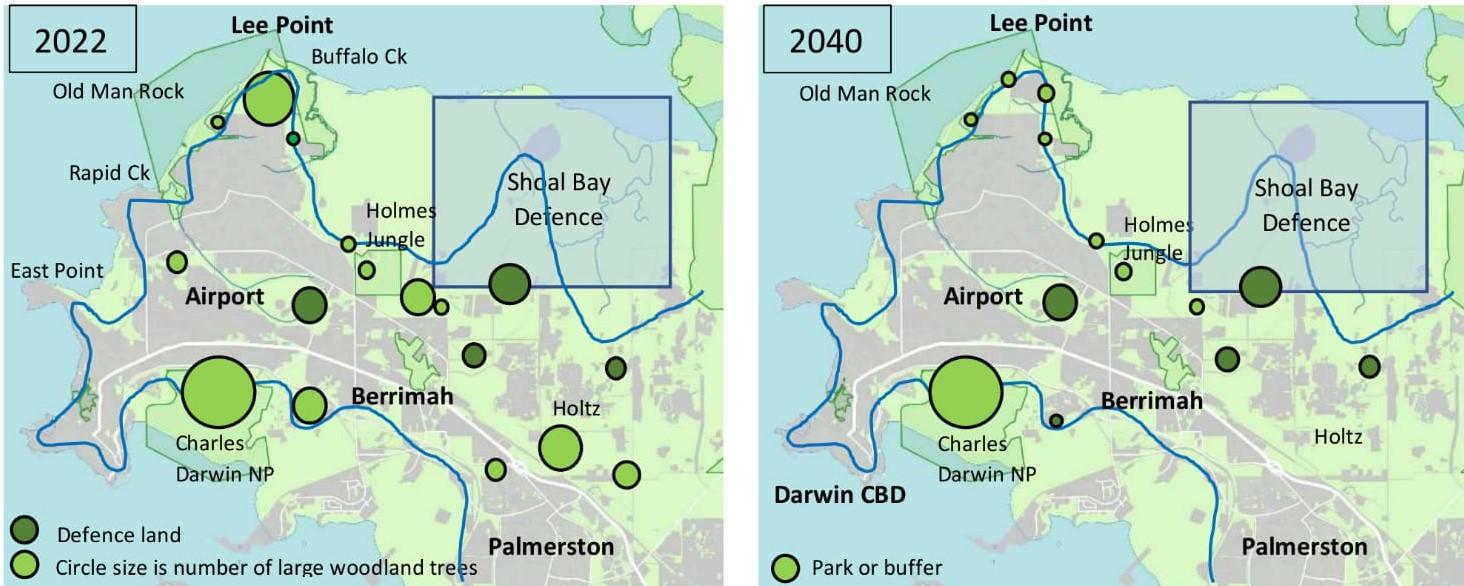
By 2040, the only woodland corridor into and out of Darwin for small mammals (and other land animals) will probably be north of Darwin. This northern corridor runs from Lee Point – Holmes Jungle – Shoal Bay Coastal Reserve, a distance of approx 30 km.
The planned DHA development at Lee Point will remove the majority of large woodland trees from Lee Point and a significant number from the northern corridor (Lee Point to Shoal Bay section). The decline of wildlife from the DHA development and clearing other Darwin woodland sites is represented below:
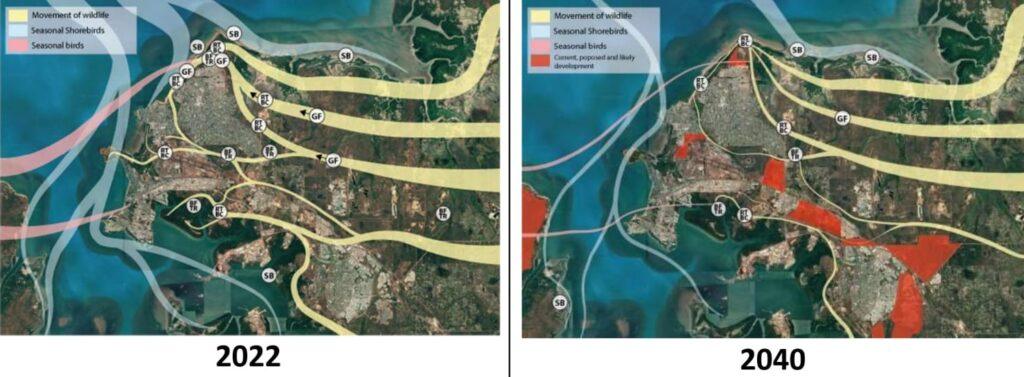
Movement of wildlife into and out of Darwin; Black-footed tree rat (BFTR), Gouldian Finch (GF), Migratory Shorebirds (SB)
Having developments in areas that disturb migratory shorebirds and block wildlife corridors (with loss of LWT) will lead to a substantial decline in wildlife movement.
Planning for Lee Point is needed before any major development happens.
Addtitional Information
-
Large woodland trees are typically > 100 years old. For more information on where they are in Darwin/Palmerston area, refer Darwin’s large woodland trees – a preliminary study.
-
Based on current trends, many native mammals will become extinct in northern Australia in the next 10-20 years, and even the largest and most iconic national parks in northern Australia will lose native mammal species. This problem needs to be solved – refer Into Oblivion? The disappearing native mammals of northern Australia
3.0 Lee Point Development
Tanya Plibersek confirmed on ABC Darwin Radio that Lee Point has Gouldian Finch habitat. This is good news for the Gouldian Finch and all the other species that use large woodland trees (tree hollows). A decision is to be made by the Australian Government once all the scientific and other information has been properly considered.
FLP have spoken to many First Nations people (Larrakia) in the past 12 months and all are strongly opposed to the Lee Point housing development. They believe the housing should be built elsewhere – listen to Bill Risk (senior elder Larrakia)
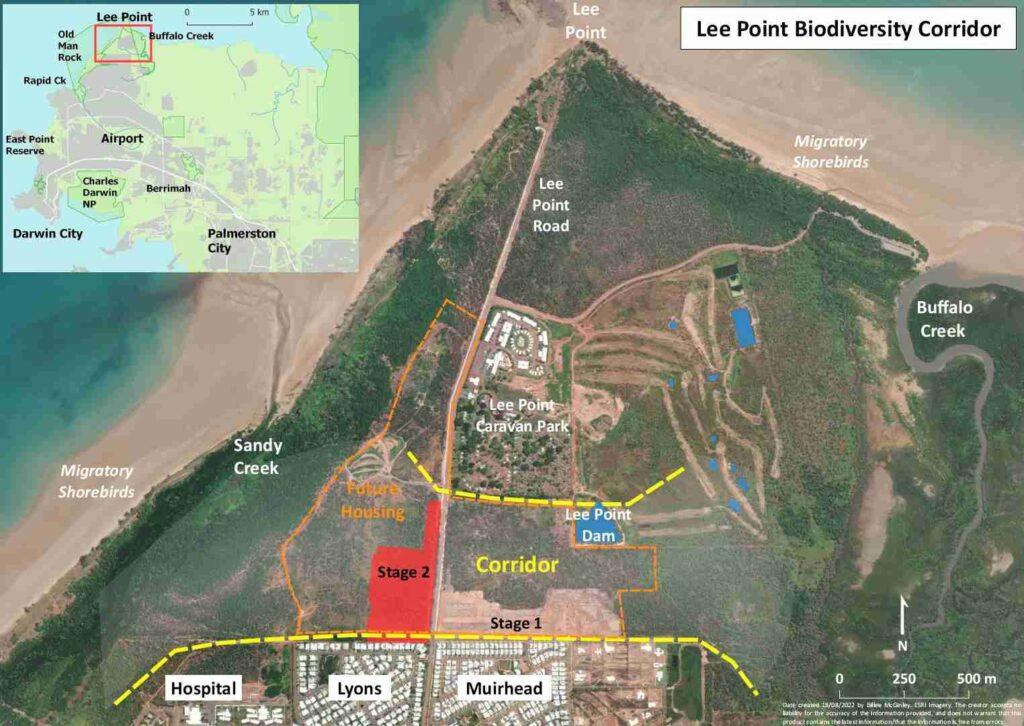
Map showing DHA Stage 2 (red) and extent of clearing works (orange)
Most people prior to 2020 were unaware of the DHA development or that the 2015 Notice of Intent (see Sec 2.2.2) had buildings up to 12 storeys high proposed for Lee Point. Please sign this NEW PETITION to help relocate the DHA development to a suitable area.
In other news, FLP have heard through the grapevine that the planned school for Lee Point is not going to be built. If further classrooms are needed these will be built at existing schools in the area.
4.0 Quiz
Q1. Where do these two waterfowl nest and what are their common names?
A. in wetland reeds B. on the ground C. on tree branches D. in tree hollows
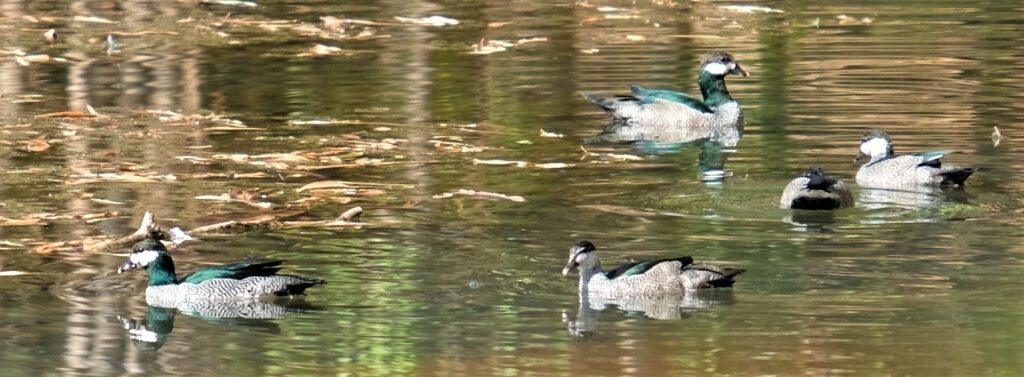
Lee Point Dam Oct 2022.
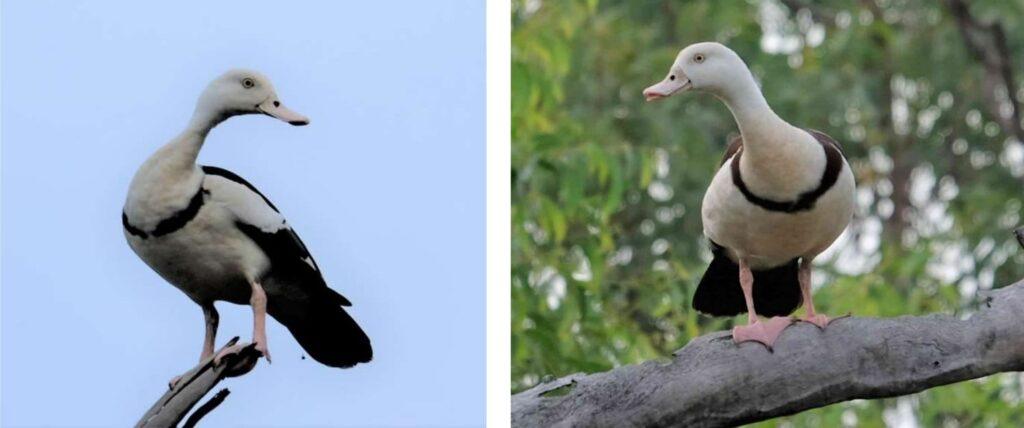
Lee Point corridor April 2023
Q2. What do sundews, dragonflies and dollarbirds have in common?
5.0 Plants and wildlife
photos taken at Lee Point in April 2023.
April is a good time for sundews, dragonflies and dollarbirds.
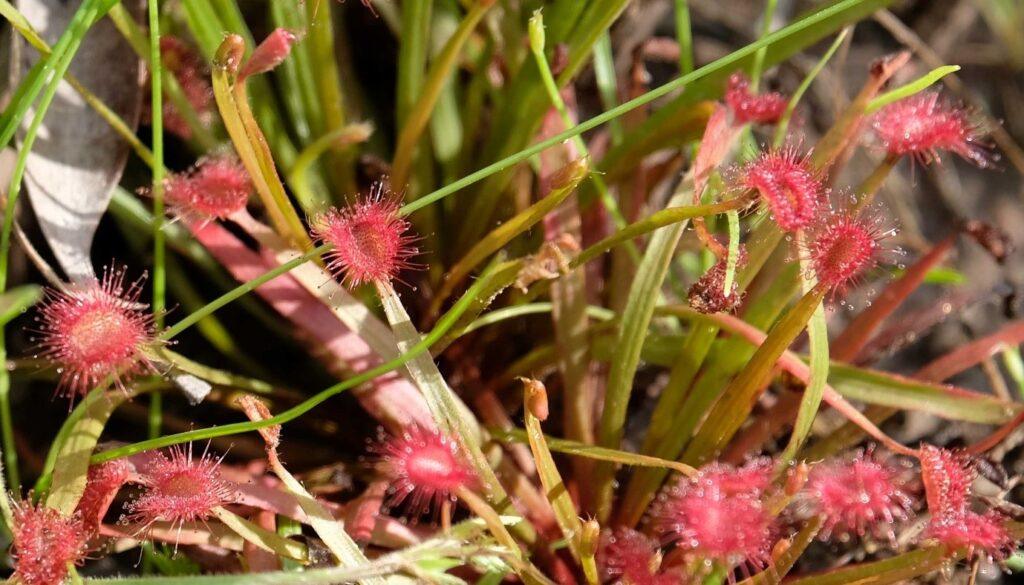
Sundew (Drosera spp.) – a carnivorous plant
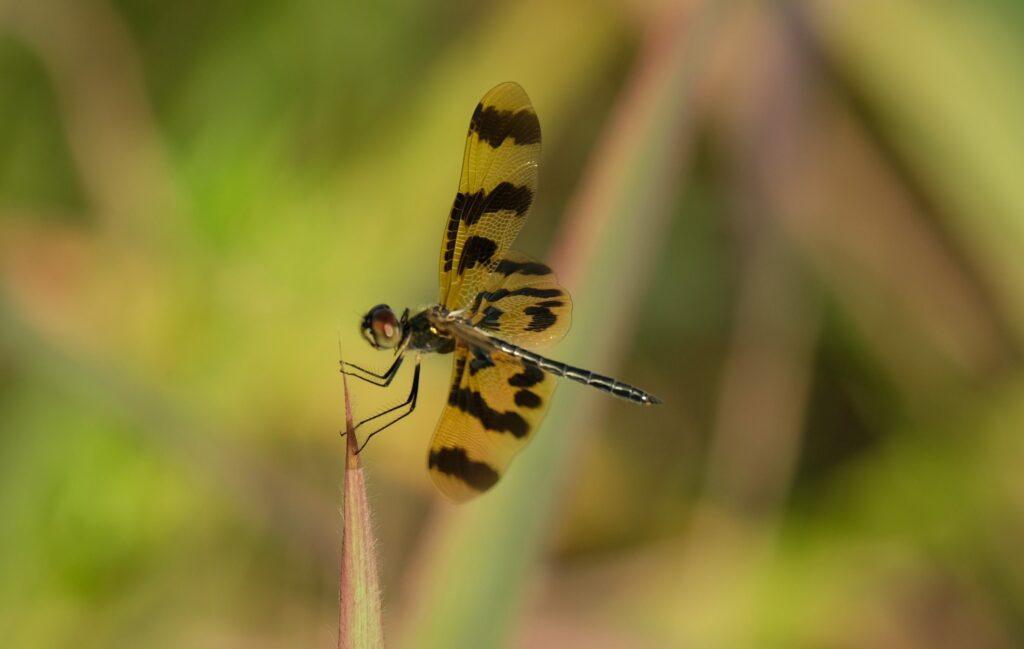
Dragonfly – Graphic flutterer
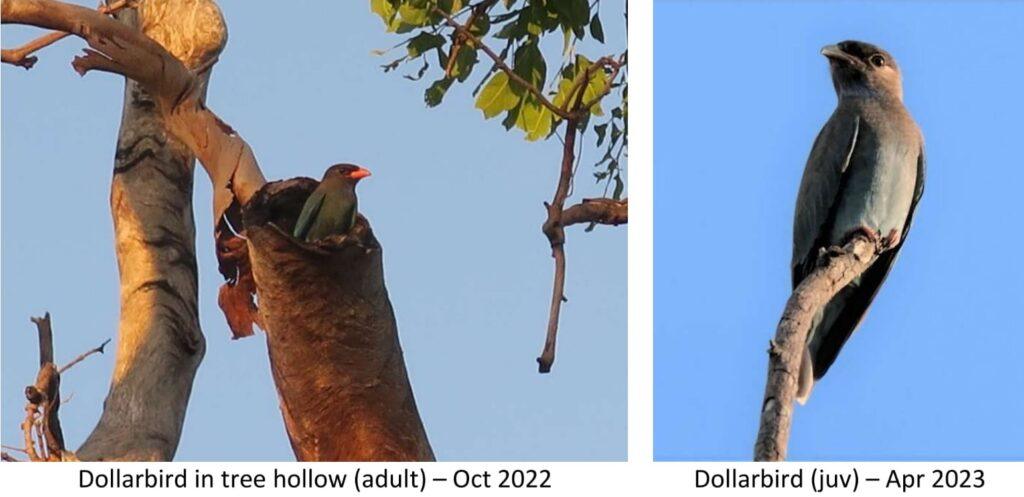
Dollarbirds breed in northern and eastern Australia and migrate to Indonesia and Papua New Guinea (for our dry season).
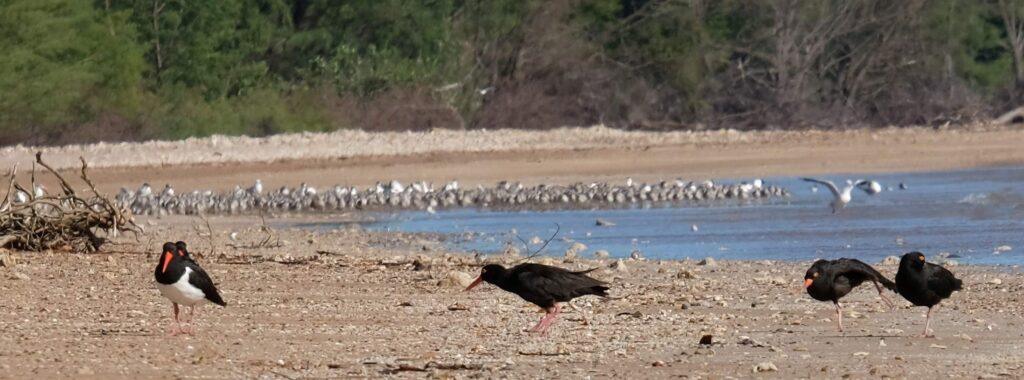
Lee Point beach – in the foreground are Pied Oystercatchers (left) and Sooty Oystercatchers (right), in the background terns and knots.
There are approx. 800 (critically endangered) Great Knots in the above photo, counted here using a photo from this (22 sec) video. Most of the migratory shorebirds (includes knots) have left Darwin now for Siberia and other breeding grounds. They return in September.
Enjoy the dry season at Lee Point